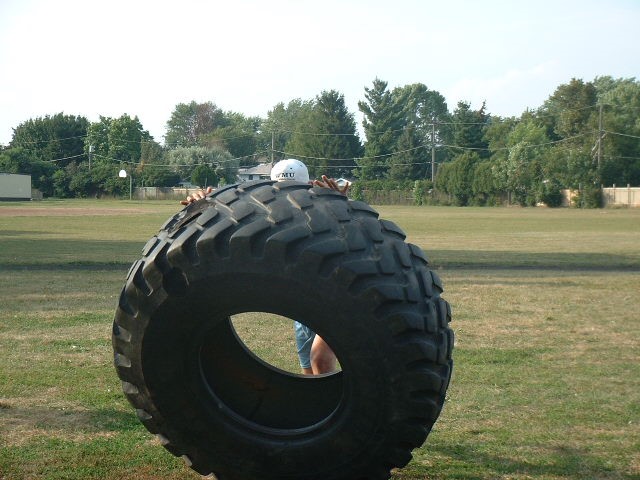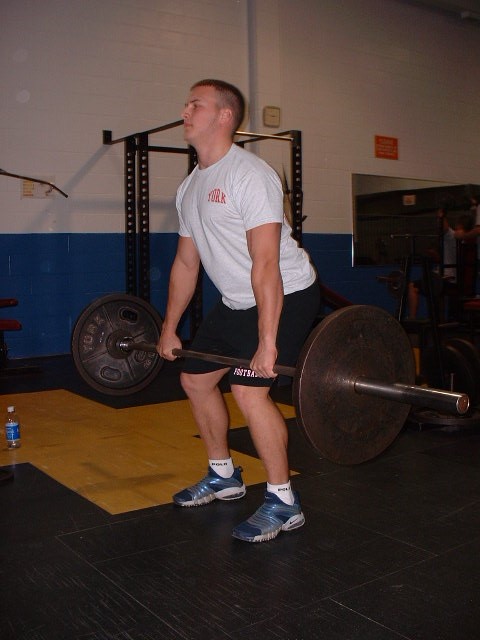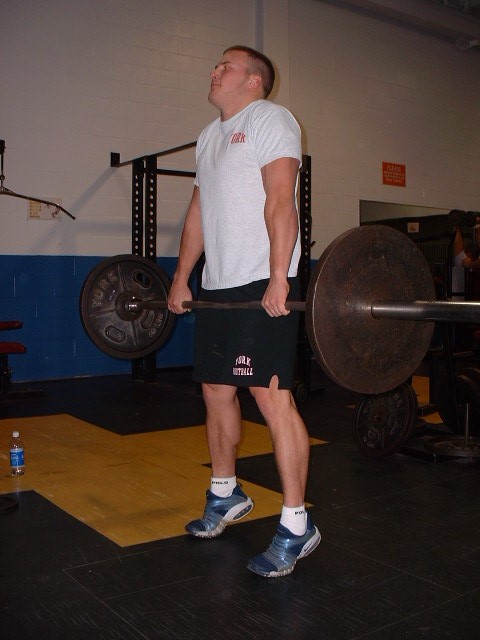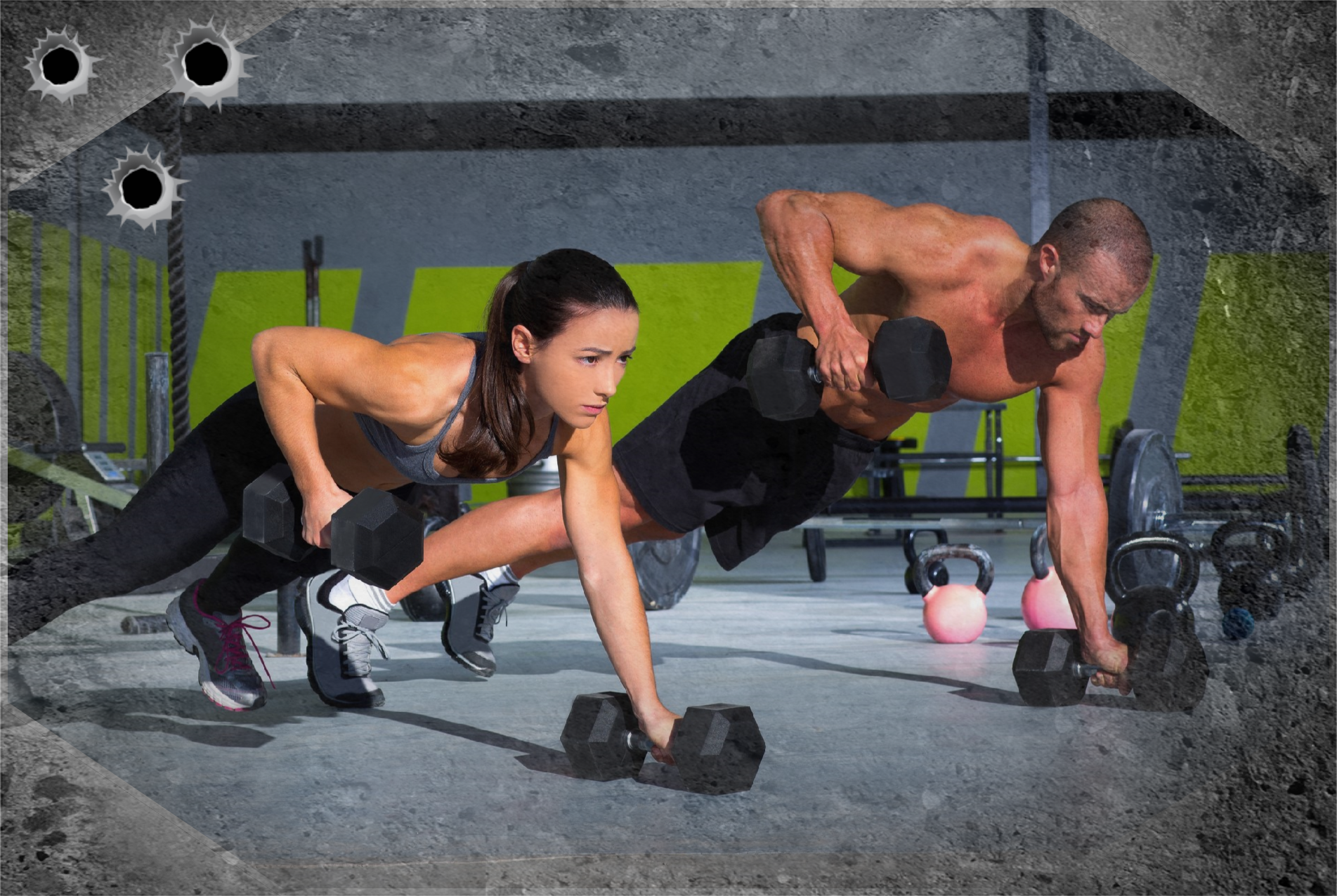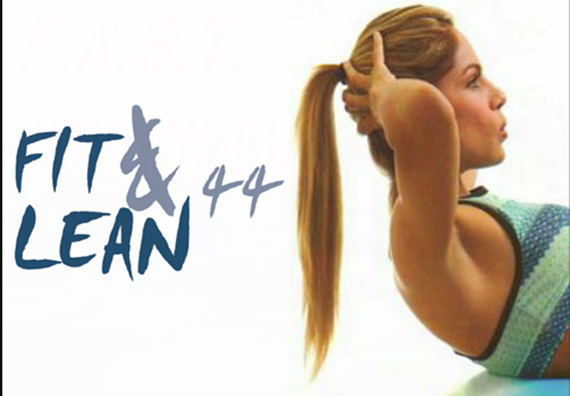If you want to go places in football, then you had better work on your 40 yard dash. While the forty yard dash is probably the most overrated test, it’s also the test that most coaches rely on when scouting a player. Given the emphasis that is placed on this one test, I am surprised at how many athletes come to combines and camps unprepared. I see athletes wearing the wrong shoes or the wrong clothes and I can tell that many of them don’t know the proper starting technique or running mechanics. Furthermore, it’s obvious that most players haven’t done any effective speed or strength training leading up to the big day. I tell my athletes that they have to consider the forty yard dash as a job interview that could land them a scholarship or millions of dollars when their stock goes up in the draft. Remember that first impressions mean everything, so plan ahead and be prepared to run like a professional. Don’t get me wrong, running a great 40 yard dash doesn’t mean that you’re automatically a great football player, but it will turn heads and give you the chance needed to show universities or professional teams what you can do on the field.
When training for the 40 yard dash, players tend to forget how important it is to be STRONG! I have yet to see a weak player run a great forty yard dash. As a Sports Performance Coach I know through personal experience that players who speed and strength train on a continuous basis will experience dramatic gains over those who only focus on speed training. One athlete who followed SST’s 12-week speed and strength training program went from a 5.05 to a 4.62 at the National football combines this year.
There are three main factors that SST considers when designing a strength training program for football players who want to decrease their forty yard dash time. First, we assess the player’s experience and abilities. Factors such as age, previous training experience, fitness level and amount of time available for training are considered. Next, we evaluate the player’s 40 yard dash to determine weaknesses. Do we need to improve his start, decrease his ground contact time or work on reaching maximum speed? Lastly, we focus on strengthening the player’s weakest muscles. As a general rule SST has found that football players tend to have weak lower back, hamstring and VMO muscle (VMO, or vastus medialis, is the teardrop muscle found on the inside of the quadriceps), therefore for the purpose of this article we will highlight , what we believe to be, the top six exercises designed to strengthen these muscles.
In Part I of this two part article, I will explain the first three exercises: snatch grip dead-lifts, tire flipping and Olympic lifts and their derivatives. These exercises strengthen lower back and hamstring muscles which are key components for achieving maximum speed.
Exercise #1 – Snatch Grip Dead-lifts
If I had to choose only one strength training exercise to improve a player’s 40 yard dash time, I would pick snatch grip deadlifts because they work the entire posterior chain (lower back and hamstrings). Snatch grip dead-lifts are a bit different than your traditional deadlift in that they recruit more of the hamstrings due to the angle of the trunk and a wider grip.
Results: improve start, increase maximum speed
Description: Starting position- feet are shoulder width apart. Grip is wider than your traditional grip. Elbows are turned out. Shoulder blades are retracted. Knees over the bar. Chest and shoulders over the bar. Lower back is arched. Initiate lift with hamstrings and lower back. Maintain lower back arch throughout. Keep bar path straight.
Variations: snatch grip dead-lifts off a podium, snatch grip dead-lifts with chains and traditional dead-lifts.
Exercise #2 – Tire Flipping
Tire flipping is not your traditional weight room exercise but it’s a functional way to develop the posterior chain (lower back and hamstrings). This is a grueling exercise that has lot of return for its effort.
Results: improve grip strength, decrease 40 time (after 12 weeks SST athletes decreased their 40 time by up to 3 tenths)
Description: Start in a deadlift position and grab the tire from underneath (fingers under the tire). Lift the tire using your legs and pop your hips forward. Flip your hands around (palms on the tire) and push the tire away from you in an explosive manner. You must keep your back arched throughout the entire movement to prevent lower back injuries.
Exercise #3 – Olympic Lifts and Derivatives
Olympic Lifts consist of power cleans, hang cleans and snatches. These exercises must be done explosively which means as fast as possible. The amount of weight doesn’t matter as much as the speed of the bar. Of all the Olympic lifts the snatch uses the most muscles in the body. People tend to shy away from this exercise but I have found it to be the most effective and easier to teach than cleans. In order to achieve maximum results and avoid injury it’s important to employ proper technique and use the right weight when performing Olympic lifts. If you are not familiar with Olympic lifting and their derivatives call your local weightlifting club or email me at sst@sstcanada.com
Results: faster starts and less ground contact time
Description: An explanation of hang snatch from thigh will be provided because it is the most applicable. Starting position – feet are shoulder width apart. Grasp bar with hook grip. To determine the distance between hand placements measure your elbow to elbow distance with arms straight out to sides. From this point move the bar explosively from thighs by extending the hip, knee and ankle joints in a jumping action. This is also known as “triple extension” of the joints. Keep the bar close to the body. This is a very important element and should be perfected. At maximum plantar flexion (up on the balls of the feet), shrug the shoulders, flex and pull with the arms. Pull the bar as high as possible. As the bar reaches maximum height, flex and then rotate elbows around and under the bar. Then fully extend the elbows and lock the bar overhead. Catch the bar with knees and hips flexed and squat down slowly and under control. The hang snatch is a complicated exercise that should only be performed in the presence of a qualified coach.
In Part II, I will explain the remaining three exercises that focus on increasing VMO strength: squats with chains, wobble board split squats and sled dragging. Strengthening the VMO muscle will help decrease ground contact time which is vital in order to increase speed. The less time a player spends on the ground, the faster he’ll be!
Larry Jusdanis is the owner of Sports Specific Training Inc. SST has trained thousands of athletes from a variety of sports. SST’s no nonsense approach to training has been used by thousands of athletes’ from a variety of sports all over the nation!
Larry Jusdanis
Owner, Sports Specific Training
Sstcanada.com
Director of the National Association of Speed and Explosion (NASE)
.


